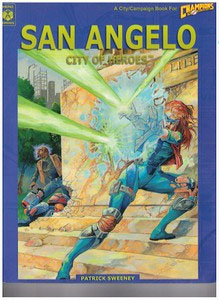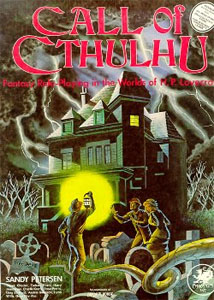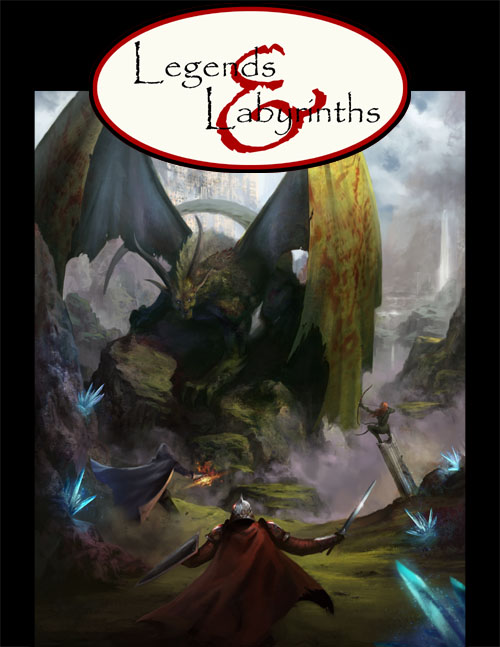Tagline: Possibly the best superhero setting ever created specifically for a roleplaying game. Inspired by works like Astro City, Marvels, and Kingdom Come this is a balanced, believable setting for the Champions game.
 I knew I was picking up a high-quality product with San Angelo: City of Heroes when I turned to page five and saw the first proper illustration of the book (ignoring one which accompanies the table of contents): A boy looking up into the sky, his basketball laying forgotten on the ground next to him; behind him the shadow of a caped figure flying past. The first words of the book? “San Angelo is truly the City of Heroes.” Definitely.
I knew I was picking up a high-quality product with San Angelo: City of Heroes when I turned to page five and saw the first proper illustration of the book (ignoring one which accompanies the table of contents): A boy looking up into the sky, his basketball laying forgotten on the ground next to him; behind him the shadow of a caped figure flying past. The first words of the book? “San Angelo is truly the City of Heroes.” Definitely.
STRENGTHS
Patrick Sweeney and the folks down at Gold Rush Games have really put together a gem. San Angelo, a fictional Californian city, takes the best elements of Astro City, Marvels, and Kingdom Come (projects all written by Kurt Busiek and Mark Waid who were, in turn, influenced by great comic book artisans of the past) and adds spice. In a little over 255 pages San Angelo: City of Heroes delivers the type of tantalizing hooks and richly textured background that is all too often lacking in your average sourcebook.
You will find that there is nothing lacking in this book. You get a finely detailed history of the city (dating back to its pre-colonial roots), a look at its current geography (in a neighborhood-by-neighborhood breakdown), an analysis of its major players (with holes deliberately left to be filled in and personalized by the GM), a look at its commercial development (from the biggest companies to the fast food joints your characters would probably find themselves hanging out at), and much more. You are left with the indelible impression that San Angelo is a living, breathing city. That’s worth the price of admission right there – far too many city supplements in the RPG industry fail to accomplish that, even when they’re based on real cities. For San Angelo to accomplish that, while being entirely fictional, is impressive feat.
Further, Sweeney has done an excellent job of making San Angelo a balanced, believable superhero world. He chooses not to include some of the more extreme staples of the superhero genre (such as aliens), but he does so in order to capture a feel of “pseudo-realism” which readers of Astro City will quickly recognize and everyone will appreciate.
In addition to the big stuff, the book also has all those nice little touches which turn a good product into a great product. The attention to detail is exquisite, but the most noticeable of these touches are the quotes from the citizens of San Angelo. These are both amusing and insightful and a prime example of the high quality his product offers.
Finally, although the book is designed with the Hero game system in mind, because the setting works so well as a setting it transcends its intended engine and could be successfully used in almost any superhero campaign. San Angelo is an inspirational product, and succeeds brilliantly because of that.
WEAKNESSES
Marring this relatively perfect picture are a few flaws. First, the lay-out is not always as keen as it might be (there’s one place where an inset causes a line of text to be reduced to less than six characters).
Second, the book lacks an index. The ultra-detailed Table of Contents typical of Hero products helps make up for that, but nothing is more annoying than trying to track down information without an index. Especially if time is of the essence (such as during the middle of a gaming session).
Finally, although the book is chock full of NPCs, not enough of those PCs are supers. It has been said that what makes one science fiction universe different from another is the aliens. That may or may not be true, but it is almost certainly true that what makes one superhero setting different from another are the superheroes themselves. The explanation for the lack of super NPCs is that the PCs are supposed to be the focus of the story. Well, yes, of course. But haven’t you ever heard of the word “crossover”? And who would want to adventure in the Marvel Universe if it wasn’t because they shared that universe with Spider-Man, the Fantastic Four, Captain America, and a host of others? I consider this lack to be the most serious problem the book possesses, but it is certainly not a crippling one.
CONCLUSION
If you have even the slightest interest in superhero roleplaying, buy this book. If you’re looking to start a new campaign there’s a good chance this will save you a lot of problems. If you have an established campaign then San Angelo would make an excellent addition to your world with a few modifications. The strengths of the book vastly outweigh the handful of weaknesses and what looks to be a strong line of support products are already on GRG’s production schedule. You won’t be disappointed.
Style: 4
Substance: 5
Writers: Patrick Sweeney
Publisher: Gold Rush Games
Price: $25.00
Page Count: 255
ISBN: 1-890305-03-0
Originally Posted: 1999/03/17
Although I have never managed to run an actual game session in San Angelo, my fond memories of this book still mark it as one my favorite city supplements of all time. It managed to make the city feel unique, believable, and unmistakably alive while also managing to capture the ineffable excitement of a world filled with superheroes.
For an explanation of where these reviews came from and why you can no longer find them at RPGNet, click here.














